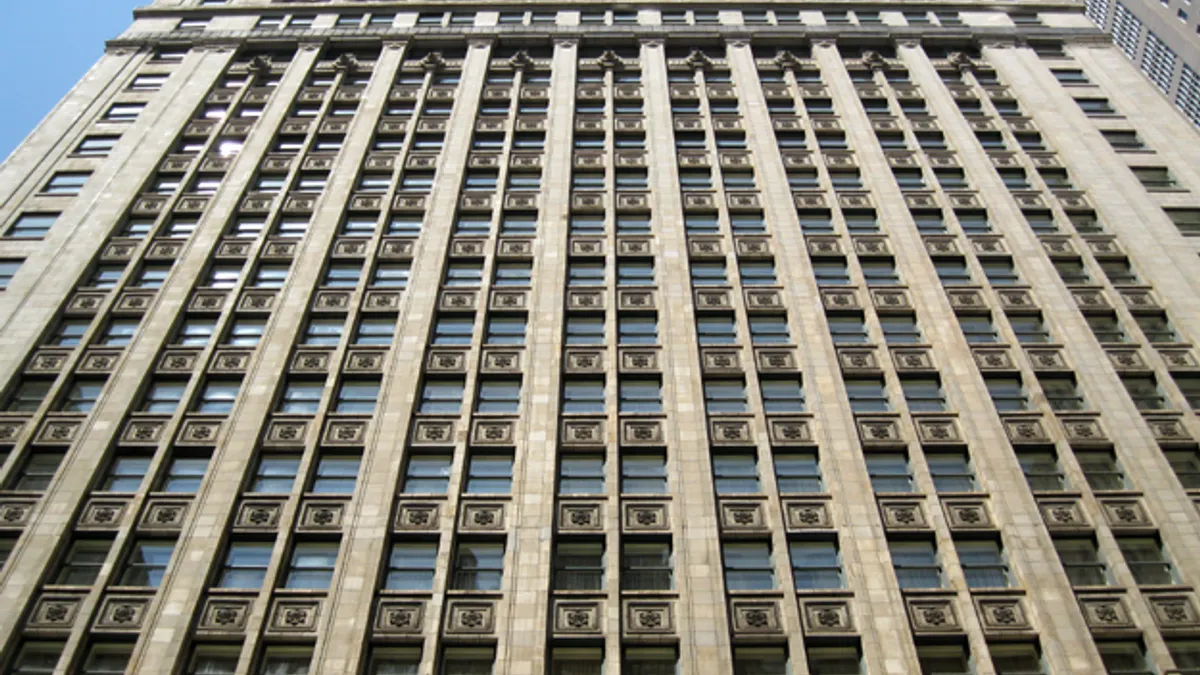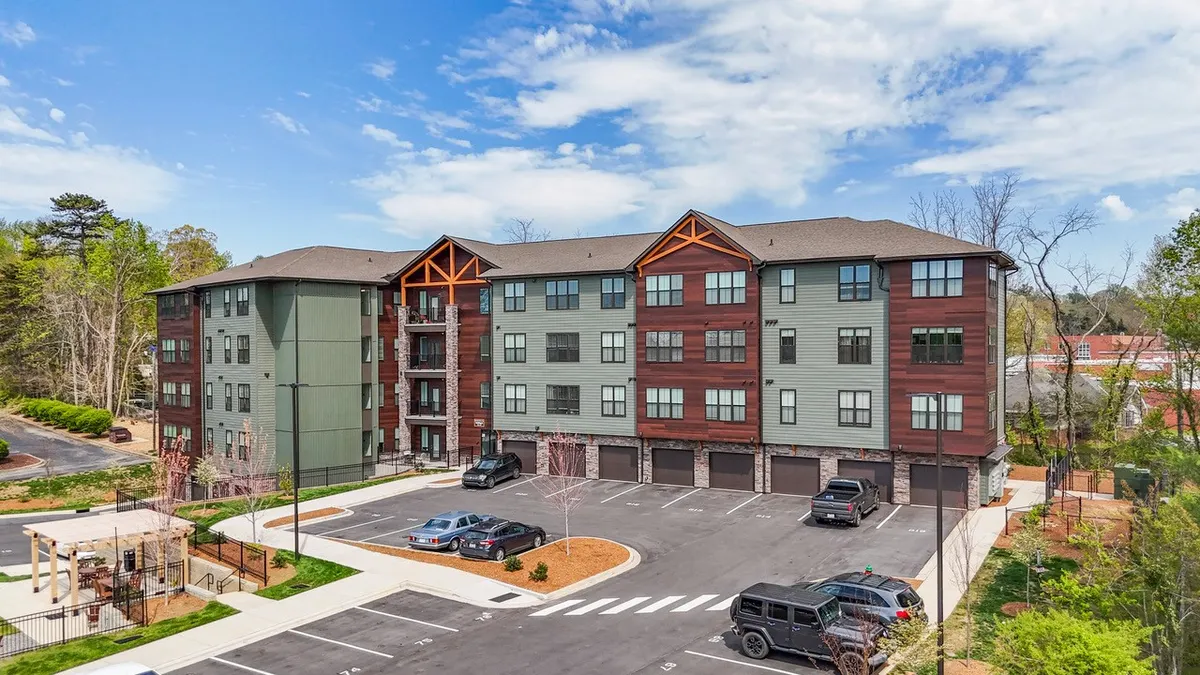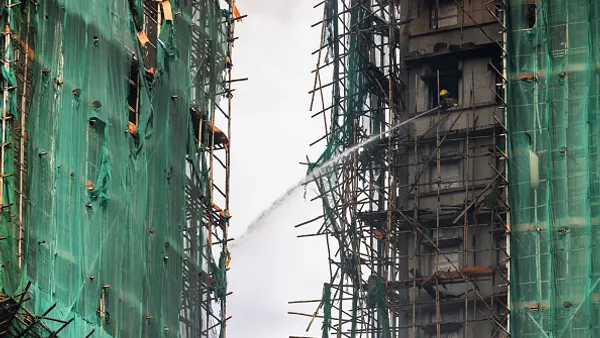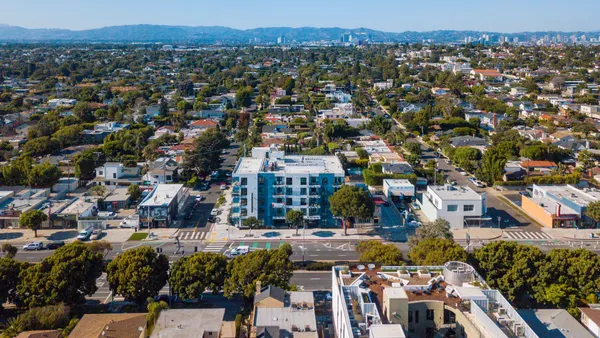Chicago-based architecture firm Lamar Johnson Collaborative has created a proprietary tool for determining the viability of converting vacant offices or other commercial properties into new uses, including hotels or multifamily, according to a press release shared with Multifamily Dive.
The Adaptive Reuse Scorecard is designed to be used at the beginning of the development process, providing a quick analysis before resources are allocated to pre-development, according to Alan Barker, principal at LJC. The tool rates a building’s conversion potential on seven metrics. They are:
- Development potential, which covers incentives available for redevelopment.
- Building form, including floor plates, utility configurations and column placement.
- Building systems, such as elevators and HVAC.
- Connectivity, including walkability, parking and access to public transit.
- Amenities and sustainability.
- Building skin.
- Intangible factors such as a building’s history, reputation and marketing potential.
The number of adaptive reuse projects in the U.S. multifamily construction pipeline has grown in the last year, up from 77,000 units in 2022 to a record of 122,000 in 2023, according to RentCafe’s latest Adaptive Reuse Report.
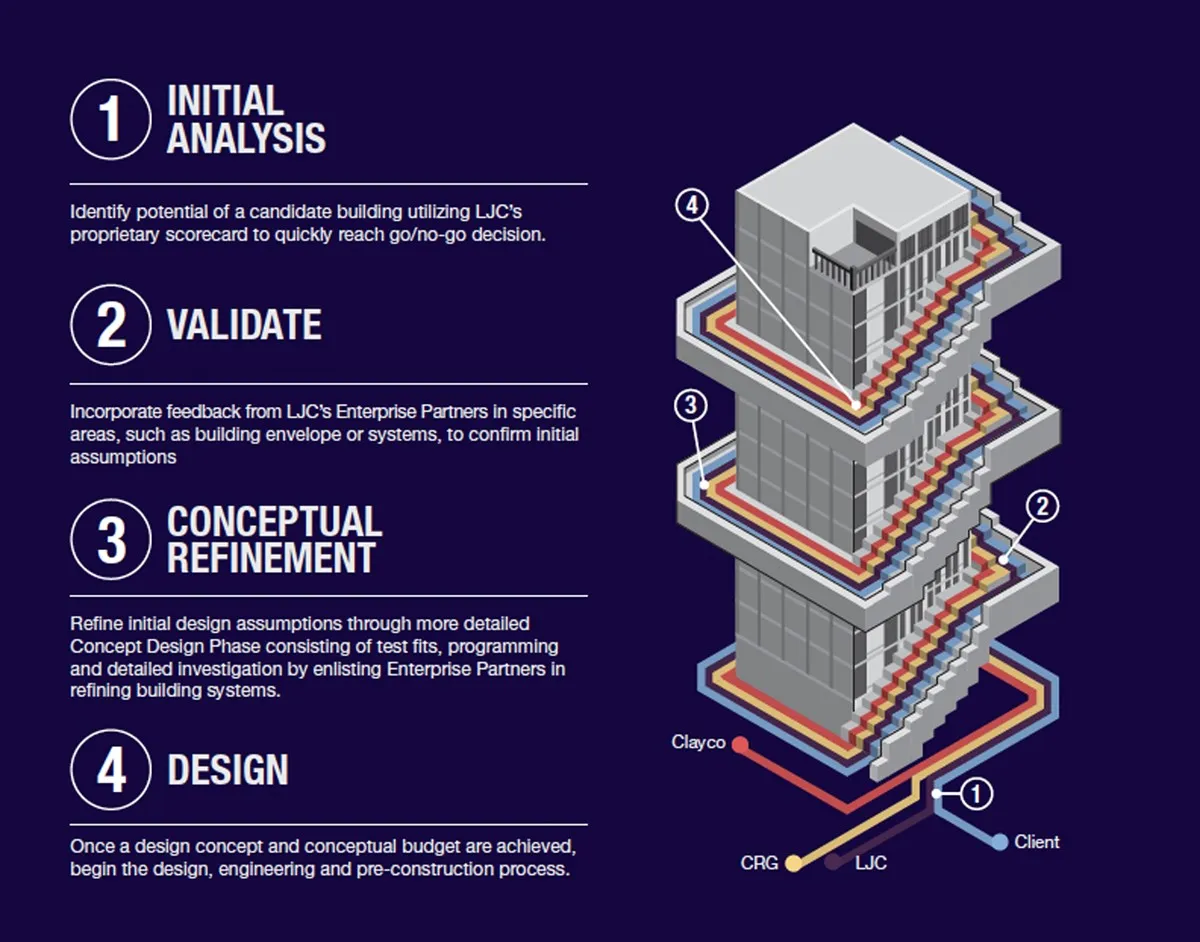
“Based on the footprint column spacing and light and vent, there's a massive number of buildings that under that simple criteria are viable for adaptive reuse,” Barker told Multifamily Dive. “But we know that there are so many other factors.”
The output from this scorecard is a percentage between one and 100. Any score above 70% is considered a viable building, according to Barker.
“Of course, there's a lot more analysis that needs to happen after that,” he said. “But because there's so much existing building stock that [clients are] looking at, it helps them quickly navigate through the buildings that are just not going to work.”
As a wholly owned subsidiary of Chicago-based design-build firm Clayco, LJC is able to tap resources from the entire company in order to conduct its scorecard analyses. “We have a full start-to-finish understanding of what it takes to convert these buildings,” Barker said, “and it's so much more complicated than just the units laid out in the floorplan.”
LJC has completed beta testing on its scorecard system on a sample of buildings in Chicago and Los Angeles. One of the first projects to use the scorecard is The LaSalle Residences at 208 South LaSalle in Chicago, which is currently in development, according to Barker. The project scope includes converting the middle floors of the 1911 commercial building into 280 residential units, among other improvements.
“Chicago is lucky enough to continue to build brand new office buildings, but it's at the expense of these beautiful terracotta and brick and stone historic office buildings that just aren’t class A anymore,” Barker said. “The potential for residential is there if we can make it work. And that's what we're aiming to do with the checklist.”


